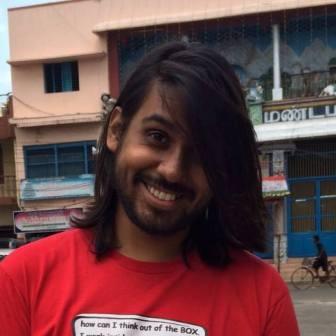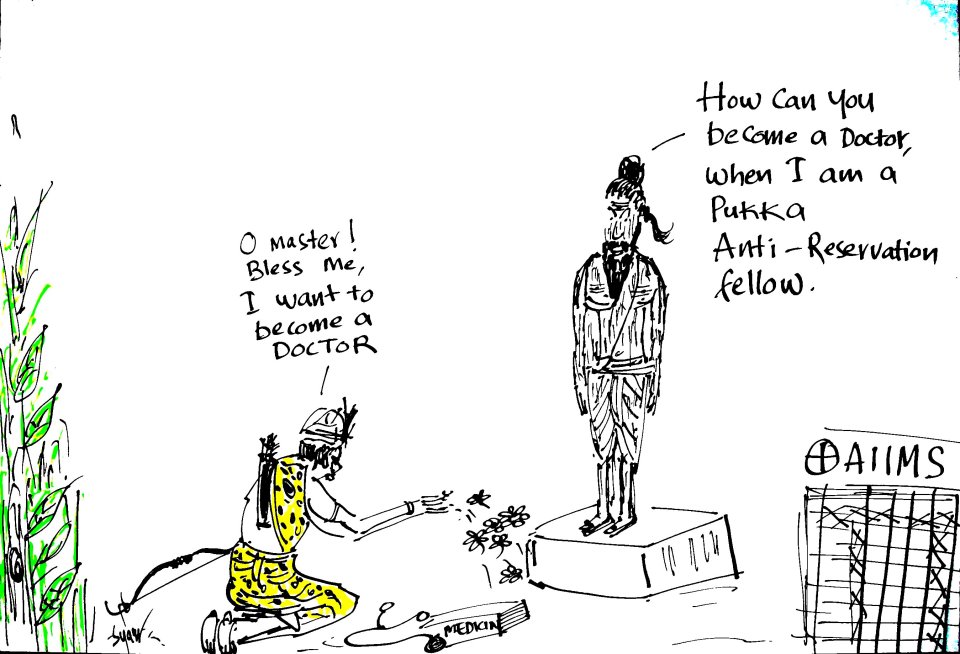S Kumar
The recently passed 124th Constitutional Amendment Bill to provide 10% reservation for savarna castes is certainly problematic due to many reasons. Most importantly, it alters the fundamental basis of reservation, which is mitigating the discrimination based on caste. This article, however, is focused on the beneficiaries of this policy change.
The amendment introduced in Article 15 enables the State to enact special provisions for the advancement of any economically weaker sections (EWS) of citizens other than the classes originally mentioned in clauses (4) and (5) of the same Article. These clauses enabled the Government to enact policies for advancement of the SC and ST communities, and any community classified as backward on the basis of social and economic indicators. The amendment in Article 16 introduced a similar clause for enabling EWS reservations in public employment. Note again that reservations were originally intended to achieve equality despite the discrimination faced due to caste.
The new amendments enable the Government to provide reservation based on the following criteria:
1. Annual income of less than Rs.8 lakhs, or
2. Ownership of less than five acres of farmland, or
3. Residential house of area less than 1000 sqft or residential plot of area less than 109 yards (1000 sqft) in notified municipality or residential plot below 209 yards (2000 sqft) in non-notified municipality area.
Let us look at why these criteria are specifically designed for the ‘poor’ Brahmin, a character from so many fictional stories. When the average income of India is about Rs 1.1 lakhs per annum, what is the rationale of using Rs. 8 lakhs as criteria? As per government data, the SC and ST population have average per capita income below Rs. 1 lakh per annum and for the rest of the population, the average is close to Rs 1.5 lakh per annum. Further, the number of ITR filings is about 7 crores in 2018. Given the government payment structure, even highly qualified and prosperous group of faculty members at Central universities, which is highly dominated by the Brahmin caste, will fall below Rs. 8 lakh per annum income criteria. This income limit does not filter out other non-Brahmin savarna castes, as majority of non-Brahmins also comes under the Rs 8 lakh limit. Only for Kayastha and Non-OBC Bania castes, it would be highly likely that annual income is above Rs. 8 lakhs since they are the major beneficiaries of modern service industry. Many people have argued that 10% quota is not much different from OBC reservation in defining the income limit of Rs 8 lakhs per annum. One difference they have highlighted is that 15% savarna population is provided 10% EWS reservation, while 52% OBC population is given 27% reservation. But they are completely missing the criteria of land and house property ownership qualification. In that aspect, the OBCs are much better placed than non-Brahmin savarna.
The second criteria is ownership of farmland of less than 5 acres. The Brahmin community has never been a farming community. In the post independence era, the Brahmin community gained government employment and acquired farmland to augment their income by renting it out to Bahujan communities. This must come out as the biggest factor to filter out the farming communities (not under OBC) from savarna reservation of 10%. Rajput, Jaat, Gujjar, Kapu, Patel, Maratha etc. have owned farmland for a long time as a primary source of family income. Further, how can 5 acre be the same from UP and Bihar to Telangana and Karnataka when the Government itself says that the majority of landless laborers and poor farmers own less than 2 acres of land. The issue is not that these traditional land owning caste are justified in this much land holding, but if can they move away from their traditional farming occupation to modern manufacturing and service industries? Would they part with their land and occupation to take their chances with seemingly very difficult and small share of government jobs without family income security?
The third criteria is even more bizarre, especially the minimum size limit of the owned house. Following is the size list of Delhi Development Authority (DDA) flats for 2017 scheme:
● LIG flats – 28.34 to 52.63 sqm
● EHS flats – 24.19 to 77.57 sqm
● JANTA flats – 18.85 to 30.45 sqm
● MIG flats – 64.04 to 109.88 sqm
● HIG flats – 77.57 to 142.46 sqm
Delhi is among the costliest property market in India. The above details clearly show that the Government does not want to exclude anyone on the basis of house ownership criteria, as only a small component of HIG flats would be above 1000 sqft house limit. Smaller towns usually have houses on plots with slightly larger plots. MIG flat cost in Delhi is higher than 1000 sqft plot in Patna, UP and other capital cities. Further, MIG rates of Delhi is lower than 2000 sqft plot in almost all non municipal zones. Mega cities like Delhi and Mumbai usually provide less than 300 sqft houses to low income families.
In the fictional stories of the poor Brahmin, they usually have two professions – priest and teacher. In the role of the priest, which is their traditional role, they usually have a house next to the temple and the whole temple property is at their disposal. Note that these properties are usually not in their name, as it was considered a community property, under exclusive command of the Brahmin priest. In the modern era, most of these properties are converted to a Trust/Society legal structure with Brahmin trustees which provides tax immunity. Coming to the second profession, that of teacher, there is no doubt that, across India, Brahmins occupy maximum teaching positions from primary school to University level. Even Christian missionary schools have more Brahmins as teachers than Christians. So, it is not surprising that the government has tried to include all the teaching posts up to Professors in Central universities in the EWS 10% quota.
This 10% reservation is highly contentious by definition as it gives special privileges to the already dominant and ruling caste without providing any proof of their economic marginalization. Further, this quota is designed to serve the purpose of Brahmins exclusively and will certainly exclude the land owning castes of Rajput, Maratha, Patel, Kamma, Gujjar etc. It is high time that the Government immediately releases the caste census with income and land ownership distribution to make policy decisions transparent and rational.
~~~
S Kumar is a technocrat with education from a top engineering institution.
Image courtesy: the internet.









